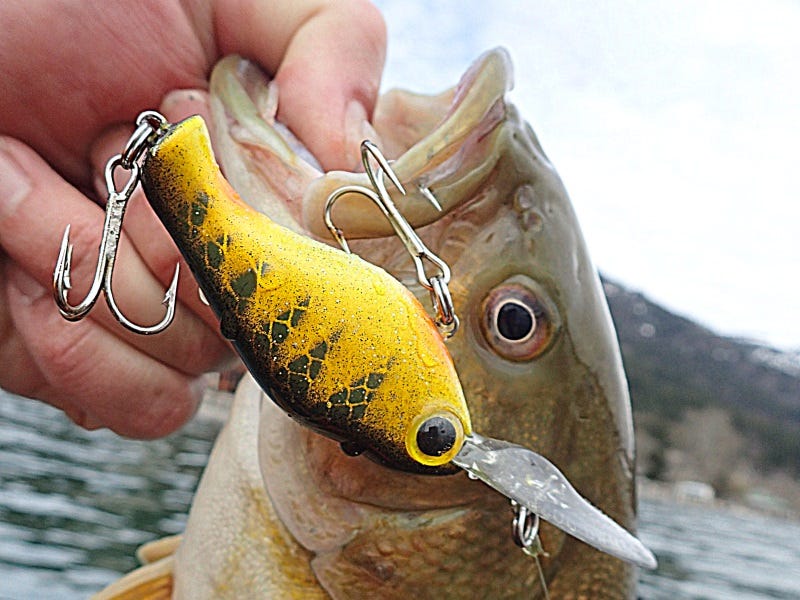Fall Fishing Tactics for Catching Smallmouth Bass


Nighttime temperatures are approaching freezing sending water temperatures crashing. As water temperatures cool into the 50's crayfish activity will subside and smallies will transition to alternative prey.
In our local lakes and rivers this usually means small fish—think sculpins, sticklebacks, kokanee, and perch. However, don't rule out large aquatic insects, especially in river systems.
Smallmouth inhabiting lakes generally move deeper as water temps cool, but we always seem to get a few really warm days even in October. On those warm days they move shallow to target sunfish warming themselves. However, you should primarily focus your energy on deeper water in excess of 15 feet deep. In rivers, fish can be found holding behind structure in current or in slackwater areas adjacent to moving water.
Fall is when crankbaits really start to shine for smallmouth bass. Deep-diving suspending crankbaits, like size 7 Rapala Shad Raps or size 8 XRaps, will get you down to 15 feet and entice those fish to strike. Slow trolling, deep diving cranks with an occasional rod dip to imitate a stunned fish help suss out smallies in unfamiliar water and can oftentimes out-produce traditional cast and retrieve techniques. Coating these cranks in gamefish or crawfish scent doesn't hurt either. If you are having trouble getting deep enough try ripping lipless crankbaits, like Rapala's Rippin Rap, along the bottom and let it rest momentarily on the bottom between each rip.
If cranks aren't producing I transition to drop-shot fishing using my fishfinder to work schools of bass holding on structure or ledges. Small minnow-patterned scented plastics, like Berkley Powerbaits' new flatnose minnows, Keitech swimbaits, or Zoom Superflukes in white, black, blue, or purple, can give your arm a serious workout with some consistent smallmouth action. Be sure on clear water lakes or highly pressured lakes to dial back your leader to 6-pound fluorocarbon—it can make a difference.
Near the end of the fall, as water temperatures dip near 40, I transition to hair jigs. Hair jigs are mysteriously absent from many smallmouth angler's tackle boxes in the western United States. However, these lures have long been a staple of Great Lakes and southeast anglers who pursue smallies deep into the winter. Paradoxically, most hair jigs are now made from marabou feathers and you really only need one color—black. Small black marabou jigs 1/16 to 1/8 oz, tied for steelhead, work perfect and are widely available. I tend to work these jigs vertically over smallmouth hugging the bottom in deep water with a light action jigging rod on 4 pound fluorocarbon. Hair jigs can extend your smallie season by weeks or even months so give them a shot.
Nothing beats fighting bronzebacks on a beautiful fall day. Get out there and experiment with some new methods. With the fall feed in full gear smallmouth fishing will be great for another six weeks or more. If you need tackle or have any questions be sure and stop by your local North 40 Outfitters. We will get you set up for your next smallmouth expedition.
